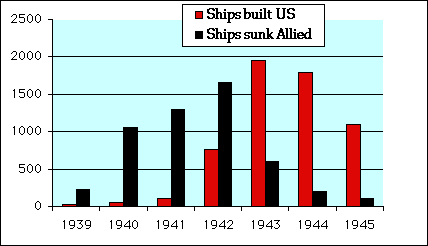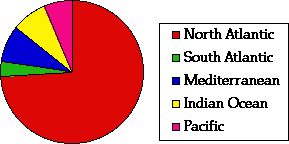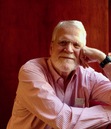Mark Scott Smith's Blog: Enemy in the Mirror, page 111
June 27, 2014
SORRY FOR ERRANT POSTS
(Poster from Office for Emergency Management. War Production Board. 1942)
Today three posts that were merely research works in progress were accidentally published.
Please excuse the error and any unnecessary email reminders you may have received.
The post SORRY FOR ERRANT POSTS appeared first on Enemy in the Mirror.
Japan Attacks Oregon – June 1942

http://www.combinedfleet.com/I-25.htm
In the late evening of June 21, 1942, the I-25, a 2,369 ton, 354 ft long B1-class submarine with a range of 14,000 nautical miles and a maximum surface speed of 23.5 knots (submerged, 8 knots), used a screen of fishing boats to avoid minefields at the Columbia River bar and cruised off Fort Stevens, Oregon.
The I-25 fired 17 rounds of its 14 cm (5.5 inch) deck gun at the shore without taking aim at any clear target. Fort Stevens’ searchlights were turned on briefly, then doused. Perhaps because the submarine was considered out of range or due to fear of giving away the exact location of the fort, U.S. artillerymen never received permission to return fire with their 10-inch disappearing guns.
The I-25′s shells fell harmlessly in the sand and scrub brush near the fort’s Battery Russell. A baseball backstop and a power line were damaged, and one soldier cut his head in a fall while rushing to his battle station. At about midnight, firing ceased and the submarine departed.
The attack of the I-25 may have been conceived as retaliation for the April Doolittle raid on Tokyo. Although it caused no significant physical damage, it did serve to heighten civilian anxiety regarding a possible Japanese invasion of the West Coast USA.
See a fictionalized description in my book: Enemy in the Mirror: Love and Fury in the Pacific War
The post Japan Attacks Oregon – June 1942 appeared first on Enemy in the Mirror.
June 25, 2014
~33 Allied Ships Sunk/Week in 1942
Charts via American Merchant Marine in World War 2
The majority of Allied losses were to U-Boats in the Atlantic. Although Germany was highly successful in the first part of the war, Imperial Japan never pursued an active campaign against shipping in the Pacific.
The overseas transportation of war materials and men by the U.S. Merchant Marine in WWII was key to Allied victory. 1 in 26 mariners serving aboard merchant ships in World WWII died in the line of duty, the greatest percentage of war-related deaths in all U.S. services.
Because of wartime censorship, newspapers reported essentially the same story each week: “Two medium-sized Allied ships sunk in the Atlantic.” In reality, the average for 1942 was 33 Allied ships sunk each week.
The post ~33 Allied Ships Sunk/Week in 1942 appeared first on Enemy in the Mirror.
June 23, 2014
Produce Now for Victory! 1942
Excerpt from War facts: a handbook for speakers on war production was published in 1942 by the Office for Emergency Management, an office established by administrative order, May 25, 1940 to assist the President in clearing information on defense measures. It maintained liaison with national defense agencies and coordinated the national defense program.
The post Produce Now for Victory! 1942 appeared first on Enemy in the Mirror.
June 20, 2014
Operation Pastorius – June 1942
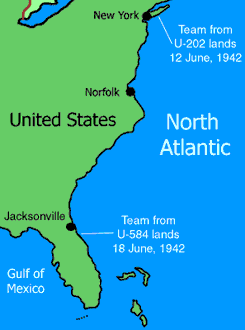
http://www.uboat.net/ops/agents1942.htm
Operation Pastorius was a failed German military intelligence (Abwehr) mission intended to sabotage the American war effort and demoralize the civilian population. The Abwehr recruited eight German residents (two were US citizens) who had once lived in the United States and trained them in the manufacture and use of explosives, incendiaries and delayed timing devices.
On the night of June 12, 1942, the submarine U-202 disembarked four of the saboteurs at Amagansett, Long Island New York. After burying their uniforms and explosives in the sand, one of the members George John Dasch was discovered by an unarmed Coast Guardsman whom he threatened and bribed with $260 to remain silent. After the Coastguardsman reported the encounter, an armed patrol arrived too late to catch the Germans, who had taken a train to Manhattan. When the saboteurs’ buried equipment was found, the FBI initiated a manhunt.
On June 6, U-584 landed the other four-member German team at Ponte Vedra Beach, Florida. After changing into civilian clothes, they boarded trains to Chicago and Cincinnati. The two teams planned to meet on July 4 in Cincinnati to coordinate their operations.
Realizing that the mission was compromised by the encounter with the Coast Guard, and disliking Nazism, Dasch and another team member Ernst Burger (an American citizen) secretly decided to defect to the United States. Dasch took a train to Washington. D.C. and turned himself in at FBI headquarters. Within two weeks, Burger and the other six team members were arrested.
On August 1, 1942, a specially-convened military tribunal found all eight defendants guilty of espionage and sentenced them to death. Because the information they provided enabled the capture of the other Operation Pastorius team members, FDR commuted Burger’s sentence to life imprisonment and Dasch’s to 30 years. The others were executed.
The only other WWII German sabotage mission to the USA occurred in November 1944 when the U-1230, dropped two spies off the coast of Maine to gather intelligence and sabotage the Manhattan Project and munition factories. Both men were swiftly captured by the FBI and received prison sentences rather than execution.
Read more: uboat.net – U-boat Operations – German saboteur landings in June 1942.
The post Operation Pastorius – June 1942 appeared first on Enemy in the Mirror.
June 18, 2014
Hollywood and the War Effort

Colonel Frank Capra edits film; Wikimedia Commons
Although the USA was in an extremely perilous position early in the war, many civilians and young military recruits held uninformed, isolationist or indifferent opinions about the Axis threat. In 1942, realizing what a powerfully motivating film German director Leni Riefenstahl’s Triumph of the Will was, the successful American director Frank Capra (It Happened One Night) enlisted in the U.S. Army to make propaganda films.
Other prominent Hollywood film directors who soon enlisted included John Ford (The Grapes of Wrath), William Wyler (Jezebel), John Houston (The Maltese Falcon) and George Stevens (Woman of the Year).
Why We Fight was a series of seven US government documentary films directed by Frank Capra with the intention of motivating Americans for the war effort.
Read the recent novel: Five Came Back: the Story of Hollywood and the Second World War by Mark Harris
The post Hollywood and the War Effort appeared first on Enemy in the Mirror.
June 16, 2014
Japanese-American Internment: A Touching Reminder
The post Japanese-American Internment: A Touching Reminder appeared first on Enemy in the Mirror.
June 14, 2014
High Tides Uncover Japanese Dead
Over two dozen deceased Japanese soldiers have been unearthed from their graves. The culprit is not some run-of-the-mill grave robber, but the ocean itself. The remains were buried near the coast of the Marshall Islands, and high tides washed over them revealing their skeletons. All of the graves were from the Second World War, and this is the first major disturbance since the Japanese soldiers were first buried there decades ago.
via: warhistoryonline.com
The post High Tides Uncover Japanese Dead appeared first on Enemy in the Mirror.
9,000 Fallen Soldiers Etched into the Sand on Normandy Beach

On June 6, 1944, more than 160,000 Allied troops landed along a 50-mile stretch of heavily-fortified French coastline, to fight Nazi Germany on the beaches of Normandy. Allied casualties on the first day were at least 10,000, with 4,414 confirmed dead. The Germans lost 1,000 men.
This largest seaborne invasion in history began the invasion of German-occupied western Europe, led to the restoration of the French Republic, and contributed to an Allied victory in the war.
With 60 volunteers, Artists Jamie Wardley and Andy Moss recently etched silhouettes representing 9000 fallen German and Allied soldiers and civilians into the sand of Normandy. The Fallen 9000 is a stark visual reminder of the immense losses during the D-Day beach landings on June 6th, 1944.
The installation lasted only a few hours before being washed away by the tide.
The post 9,000 Fallen Soldiers Etched into the Sand on Normandy Beach appeared first on Enemy in the Mirror.
June 13, 2014
Reinhard Heydrich Assassinated – May 1942
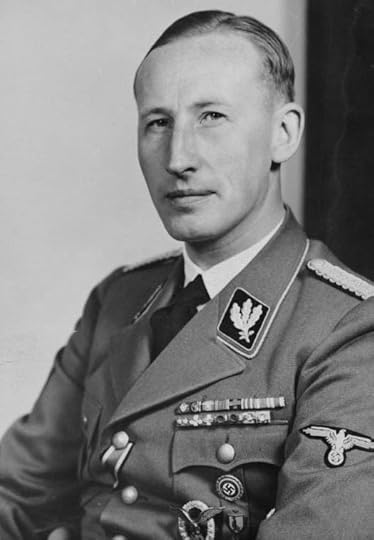
Reinhard Heydrich; Wikimedia Commons
Obergruppenführer Reinhard Tristan Eugen Heydrich, was the founder of the Sicherheitsdienst (SD), an intelligence agency charged with eliminating resistance to the Nazi Party by arrests, deportations, and killings. He had also been chairman of the January 1942 Wannsee Conference, which formalized plans for the final solution – deportation and extermination of all Jews in German-occupied territory. Additionally, Heydrich was directly responsible for the Einsatzgruppen special forces that travelled in the wake of the German armies killing Jews and others deemed undesirable by the regime.
Placed in charge of the Reich Main Security Office (including the Gestapo, Kripo, and SD) of Bohemia and Moravia (now in the Czech Republic), Heydrich began eliminating Nazi opposition by suppressing Czech culture and deporting resistance members.
Heydrich was attacked in Prague on May 27, 1942 by a British-trained team of Czech and Slovak soldiers and died from his injuries a week later. Nazi intelligence reportedly linked the assassins to the villages of Lidice and Ležáky. In retaliation for Heydrich’s assassination, both villages were destroyed and most citizens executed. Some women and children were deported and later killed in concentration camps.
The post Reinhard Heydrich Assassinated – May 1942 appeared first on Enemy in the Mirror.
Enemy in the Mirror
I began by posting events around the turn This website www.enemyinmirror.com explores the consciousness, diplomacy, emotion, prejudice and psychology of 20th Century America and her enemies in wartime.
I began by posting events around the turn of the 20th century as I was researching my first novel about the Pacific War. I continued through WWII for my second novel about the Battle of the Atlantic. Now I am beginning to look at the Cold War as I gather information for my next novel about the Korean War. ...more
- Mark Scott Smith's profile
- 7 followers



